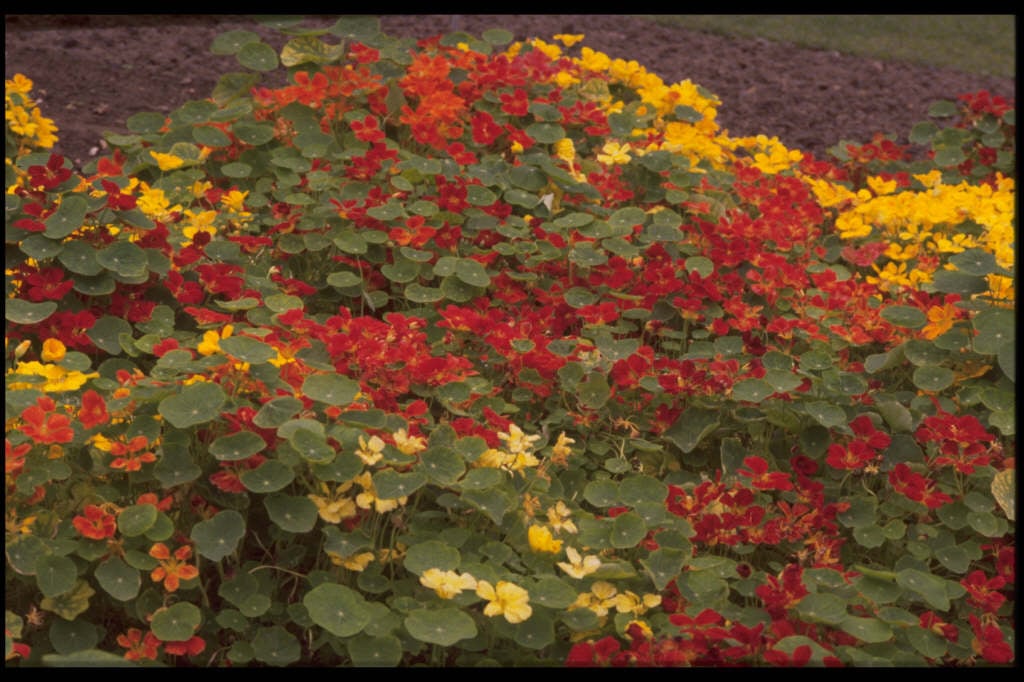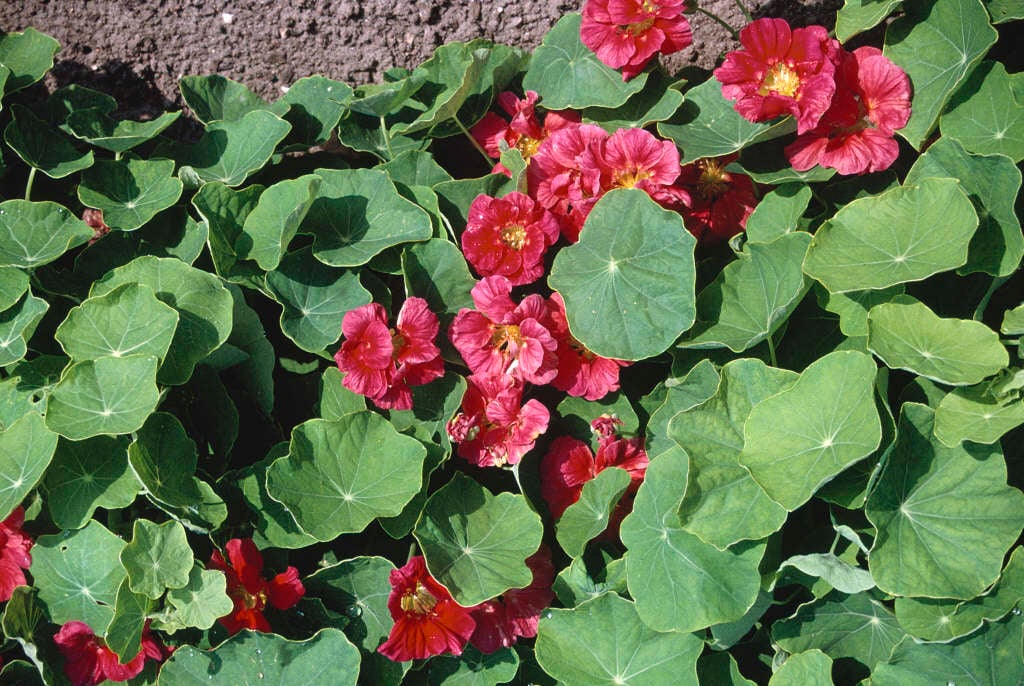Tropaeolum majus Whirlybird Series
nasturtium Whirlybird Series
Dwarf, bushy annuals to 24cm in height, with rounded light green leaves and non-spured, single or semi-double flowers to 5cm across, produced well above the foliage, in shades of yellow, orange, red, pink and mahogany
Size
Ultimate height
0.1–0.5 metresTime to ultimate height
1–2 yearsUltimate spread
0.1–0.5 metresGrowing conditions
Moisture
Moist but well–drainedpH
Acid, Alkaline, NeutralColour & scent
| Stem | Flower | Foliage | Fruit | |
| Spring | Green | |||
|---|---|---|---|---|
| Summer | Orange Red Yellow | Green | ||
| Autumn | Orange Red Yellow | Green | ||
| Winter |
Position
- Full sun
Aspect
West–facing or East–facing
Exposure
Exposed or Sheltered Hardiness
H3Botanical details
- Family
- Tropaeolaceae
- Native to GB / Ireland
- No
- Foliage
- Deciduous
- Habit
- Bushy
- Potentially harmful
- Skin allergen. Wear gloves and other protective equipment when handling
- Genus
Tropaeolum can be annuals or perennials, bushy, trailing or climbing by twining stems, with simple or palmately lobed leaves and showy funnel-shaped flowers with five long-clawed petals and often a spur
- Name status
Accepted
How to grow
Cultivation
Grow in poor, moist but well-drained soil in full sun
Propagation
Propagate by seed sown in mid spring
Suggested planting locations and garden types
- Coastal
- Patio and container plants
- City and courtyard gardens
- Cottage and informal garden
- Banks and slopes
- Flower borders and beds
- Garden edging
Pruning
Cut back after flowering
Pests
May be susceptible to glasshouse whitefly and glasshouse red spider mite and whitefly
Diseases
May be susceptible to virus diseases
Get involved
The Royal Horticultural Society is the UK’s leading gardening charity. We aim to enrich everyone’s life through plants, and make the UK a greener and more beautiful place.

